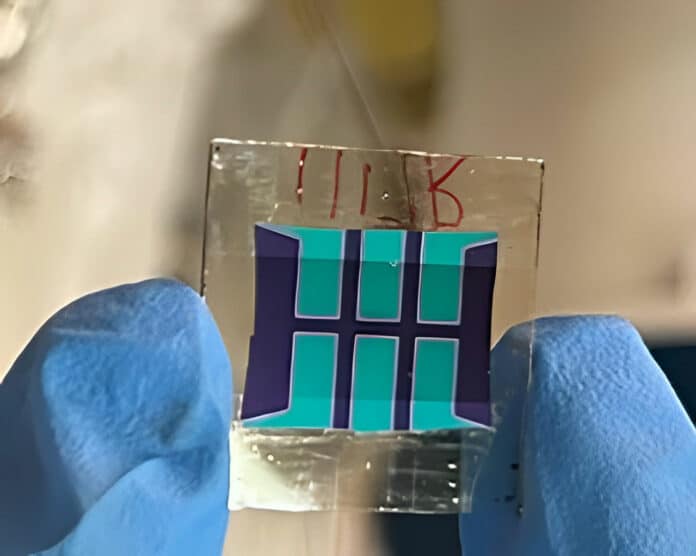According to scientists at the U.S. Department of Energy’s National Renewable Energy Laboratory (NREL), a bifacial perovskite solar cell holds the potential to produce higher energy yields at lower overall costs.
The bifacial solar cell captures direct sunlight on the front and reflected sunlight on the back. As a result, this type of device can outperform its monofacial counterparts, according to the new study.
“This perovskite cell can operate very effectively from either side,” said Kai Zhu, a senior scientist in the Chemistry and Nanoscience Center at NREL and lead author of a new paper.
Bifacial photovoltaics (PV) harvest solar irradiance from both their front and rear surfaces, boosting energy conversion efficiency to maximize their electrical power production. However, it’s important to note that bifacial single-junction perovskite solar cells are still far behind that of their monofacial counterparts in terms of performance. It is challenging to achieve both high bifaciality and high front-side illumination efficiency at the same time.
In past research, bifacial solar cells have struggled to keep up with monofacial cells, which currently have a record efficiency of 26%.
Ideally, the NREL researchers noted that a bifacial cell should have a front-side efficiency close to the best-performing monofacial cell and a similar back-side efficiency.
In the latest study, the NREL team was able to make a solar cell where the efficiency under illumination from both sides are close together. The lab-measured efficiency of the front illumination reached above 23%, and from the back illumination, the efficiency was about 91%-93% of the front.
Researchers used optical and electrical modeling to design a transparent conducting rear electrode for bifacial PSCs to enable optimized efficiency under a variety of albedo illumination conditions.
The perovskite layer on the front of the cell had to be sufficiently thick to absorb most of the photons from a certain part of the solar spectrum. But a perovskite layer that is too thick can block the photons. The NREL team also had to figure out the ideal thickness of the rear electrode on the back of the cell to minimize resistive loss.
Using the simulations, researchers found that the ideal thickness for a perovskite layer is around 850 nanometers. This is just a fraction of the thickness of human hair, which measures approximately 70,000 nanometers.
The team then placed the cell between two solar simulators and aimed direct light at the front side while the back side received reflected light. The efficiency of the cell climbed as the ratio of reflected light to the front illumination increased.
Researchers estimate that a bifacial perovskite solar module would cost more to manufacture than a monofacial module. However, over time bifacial modules could end up being better financial investments because they generate 10%-20% more power.
Journal reference:
- Qi Jiang, Zhaoning Song, Rosemary C. Bramante, Paul F. Ndione, Robert Tirawat, Joseph J. Berry, Yanfa Yan, Kai Zhu. Highly efficient bifacial single-junction perovskite solar cells. Joule, 2023; DOI: 10.1016/j.joule.2023.06.001
